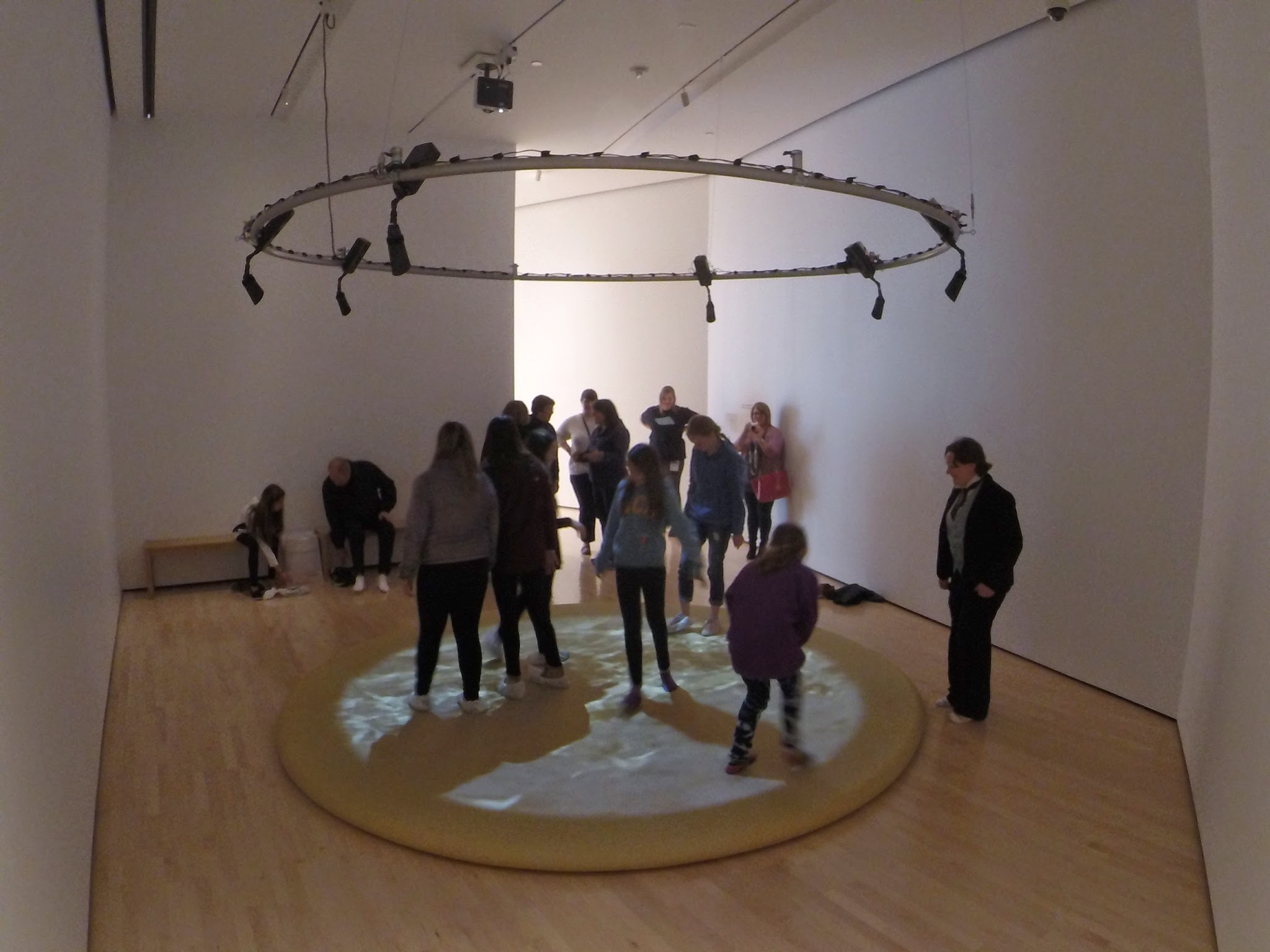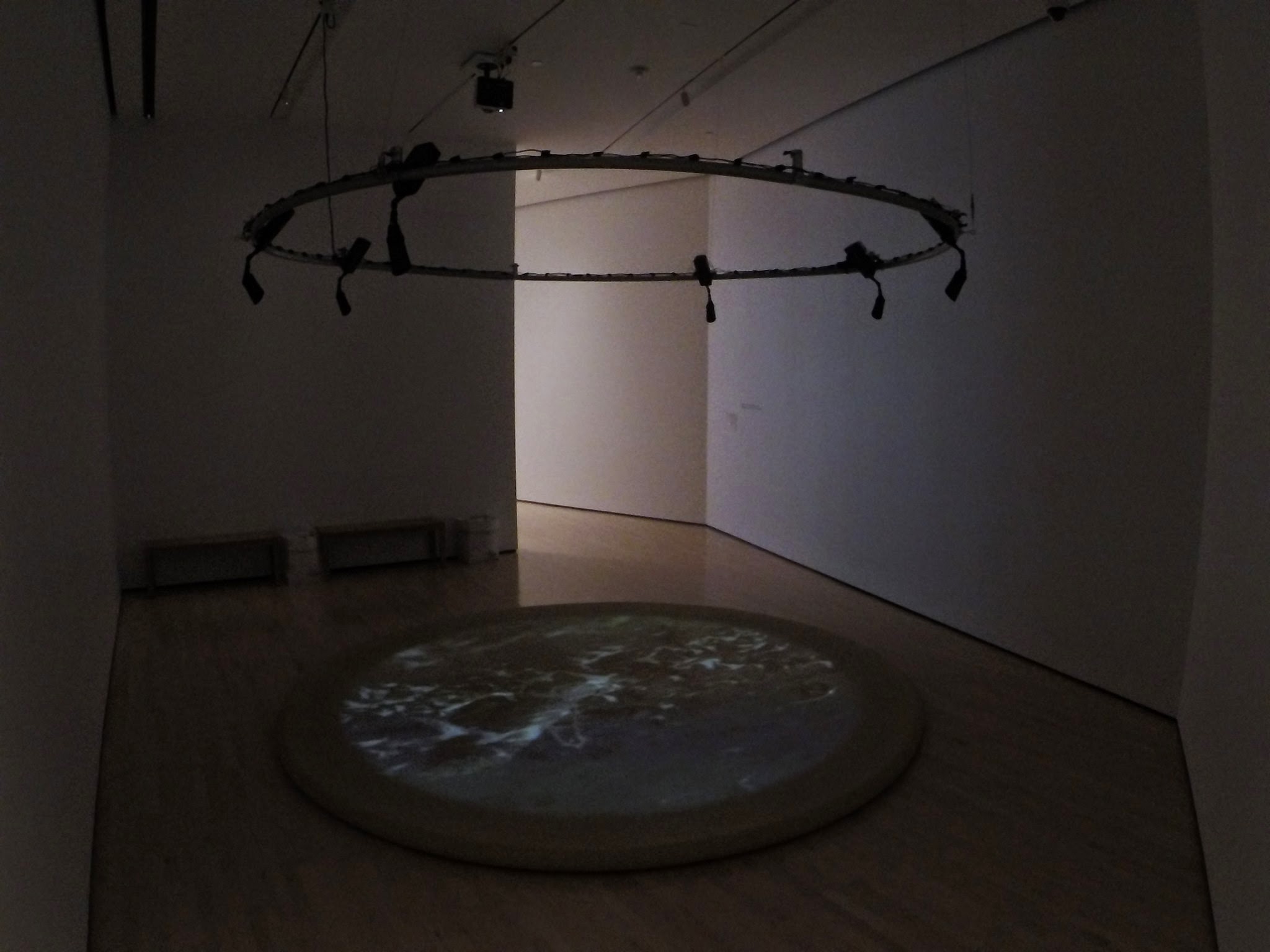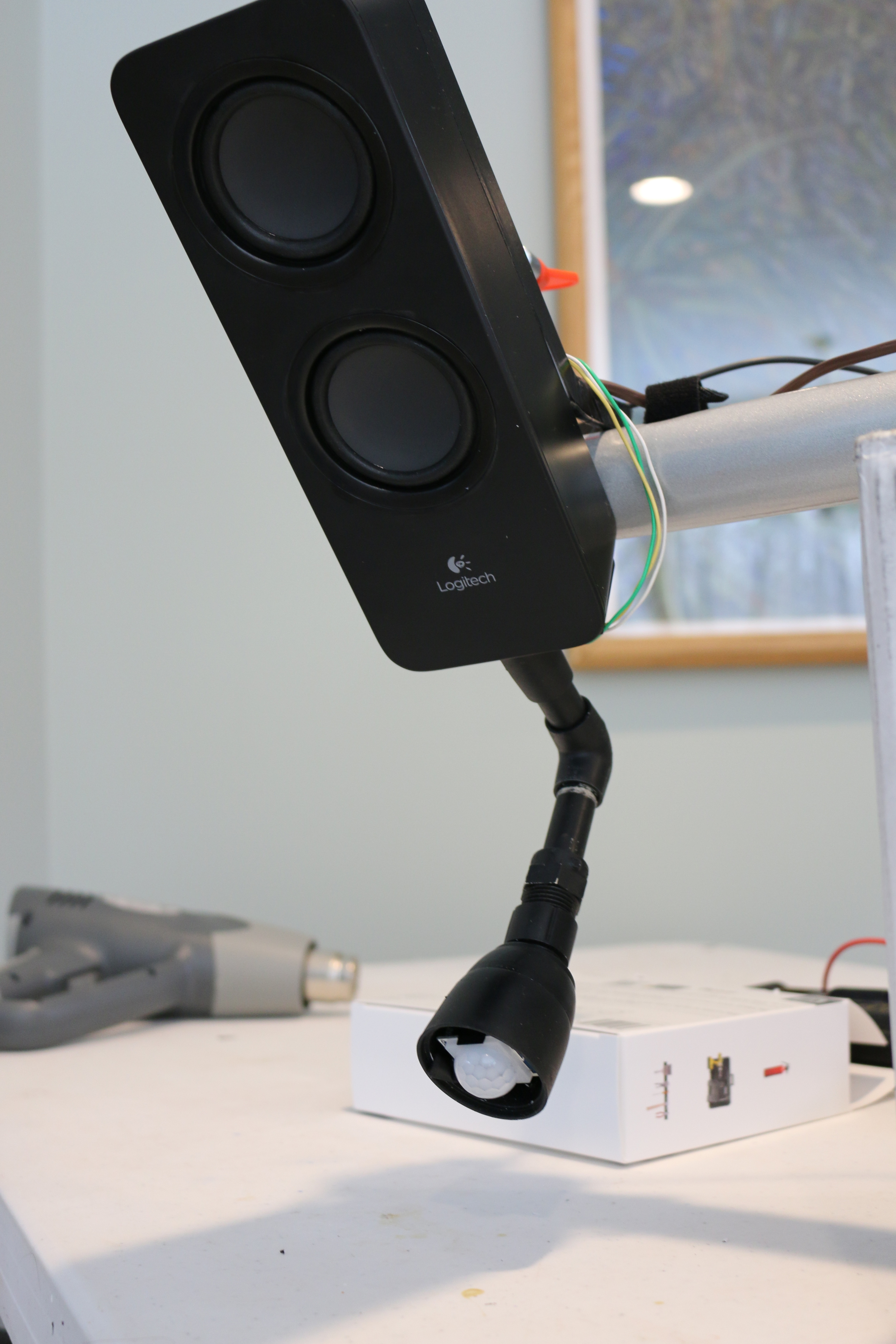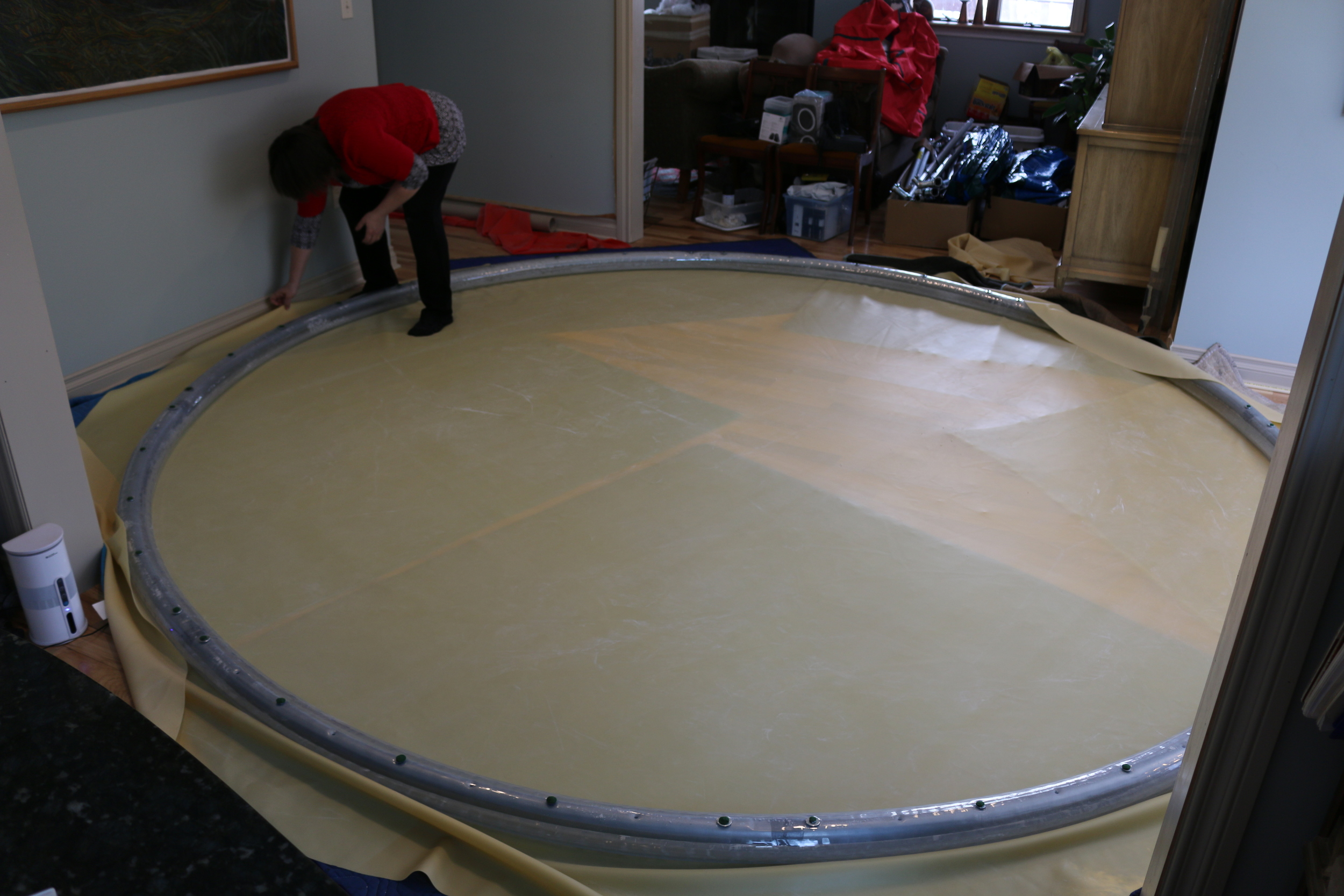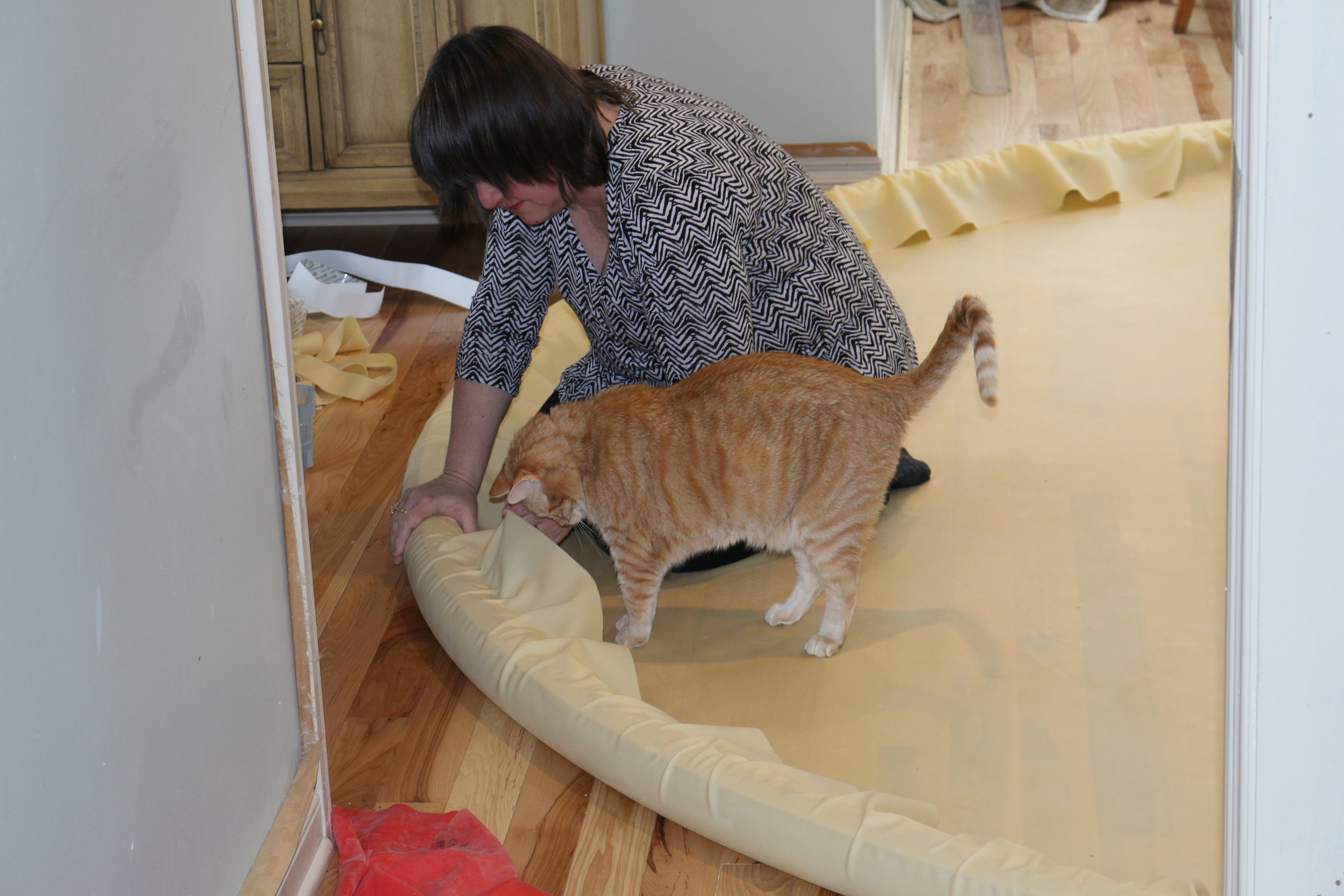Two Billion/One
Two Billion/One, 2015, multimedia installation, steel, latex sheeting, speakers, sensors, 10,000 condoms, h.15’ x w.12’ x d.12’
Two Billion/One is a multi-sensory installation that addresses the increasing devastation caused by our expanding human population and its unprecedented stress on natural resources. This work confronts our role in the current environmental crisis and places us within it.
Scientists have estimated that our planet resources can sustain about 2 billion humans at the standard of the European lifestyle today.[i] This standard is defined as adequate food, water, shelter, healthcare, sanitation, and energy for everyone. At present, the world population exceeds 7 billion and it is estimated that it will grow to 9.6 billion by the year 2050.
The main structure for this installation is a twelve-foot circular latex form that is based on a diaphragm. The natural latex is stretched over a twelve-foot round tube frame that also creates a condom like appearance. Latex was chosen because it is used to create prophylactics and also because of its supple and skin-like surface.
This twelve-foot diaphragm becomes a stage where converging and moving images are permeated by discordant sounds that radiate and project across the form when humans are contained within it. A video depicting different kinds of natural swarming events is projected onto the diaphragm. Swarming is a method used by many species to avoid predation and insure survival. A participant is encouraged to step onto the diaphragm. When this happens, their shadow is cast over the natural scenes and the scenes of swarming are projected onto them. As the participant enters the piece, a sensor is tripped and human sounds are blasted at them. These sounds are audio-clips of the consumption of resources; commercial fishing vessels, blasting for coal, traffic noise, tree felling, oil drilling, and a jet engine accelerating. This experience is simultaneously invigorating, disrupting and engaging.
The participant is made aware of their body and their weight by the experience of walking on the surface of the diaphragm and the feeling of something below the surface. The participant may not be cognizant of what they are walking on, but they experience a soft, squishy sensation. If they choose to look closely, they will discover ten thousand condoms below the surface of the diaphragm. The gradual comprehension of the underlying concepts of this piece produces laughing, surprise, and sadness.
The prophylactic skin of the latex prompts the viewer to consider the common use of the material and reflect upon the expanding human population, which has created stress on natural resources that is unprecedented in the history of our planet. Diaphragms are not only female contraceptives, but also amplifiers. This piece amplifies the core concept, not only in material and dual meaning, but also in sheer size and volume.
Although Art Museums are not a truly public space, the interaction this piece offers can reorganize the senses through physical and/or emotional immersion. This is essential because it can force the individual to realize their culpability in the issues, as well their ability to make change. It places them within the equation. By encouraging dialog and participation, the activity of talking, touching, and connecting produces a positive didactic outcome.
This opens a conversation about mutualism and our role inthis ecosytems destruction.
Two Billion/One confronts our role in the current environmental devastation, places us within it, and provokes us to feel uncomfortable in our own skin. Though highly controversial, we must confront our growing global population. In order to ensure the well-being of all species, it is crucial for us to conserve and protect natural resources. Audience participation is encouraged and reactions are fostered. Each person is invited to enter this paradigm and to consider their global impact at a time of extreme waste and consumption.
[i] World Population Balance. World Population Balance. Spring 2014. http://www.worldpopulationbalance.org/3_times_sustainable (accessed december 2014).
